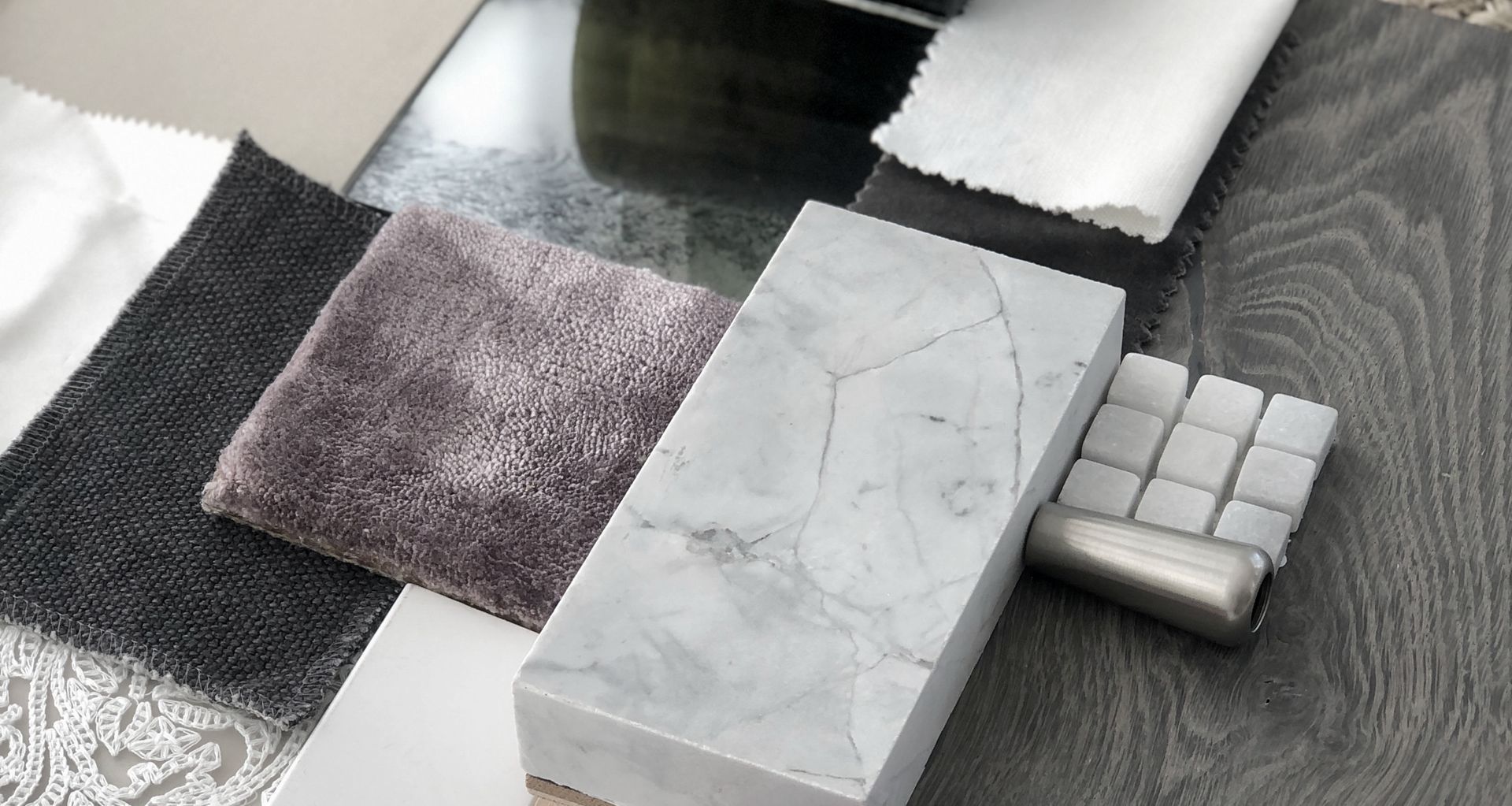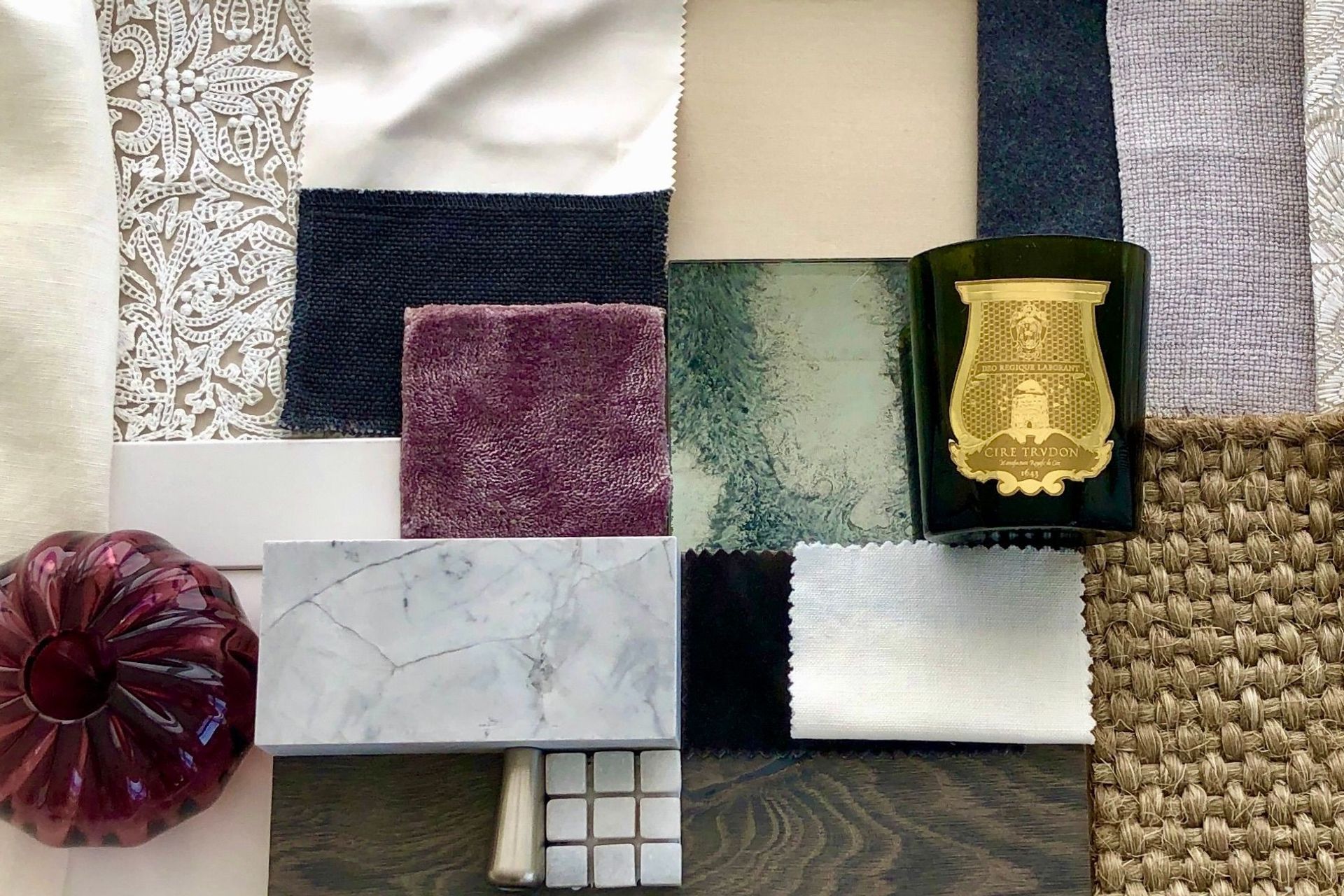Putting together a materials board with Bridget Foley
Written by
20 June 2022
•
5 min read

Tell me about the materials board you have put together for us?
It was for a family home in a beachside suburb in Wellington – a city house right by the sea that the homeowners didn’t want to be too ‘beachy’. We've added lots of layers and tones to make it a little bit more casual than a huge city home, but also not a beach house. The clients have lots of family coming and going, so they wanted it to be comfortable and sophisticated at the same time.

What are the key things you consider when choosing materials?
It’s always about timelessness and longevity, I don’t really do trends. It’s simply not sustainable to keep replacing items, it’s better to buy the best products you can rather than replacing them all the time – it’s false economy, and it's bad for the planet. So I always say to people that it’s better to wait for that beautiful piece.
Also, think about how much use of something you will get: are they in the sun, are there pets in the home, do you entertain a lot? Think about the indoor-outdoor flow and the transition of these materials, you don’t want them to jar against each other – they should tie in with each other. But the key is timelessness – things should last, you shouldn’t expect to replace things all the time.
What was the starting point for bringing this scheme together?
I always spend a lot of time getting a good brief from my clients. I think that’s really time well spent and so when we started on the materials for this home, one of the biggest things we started with was the flooring. It was such a massive house so whatever you put on the floor, there was going to be a lot of it so it had to be right. The clients didn't want it bleached or really dark, so we did spend a long time choosing this particular flooring just because it was going to be such a huge part of the home. We started with these beautiful, wide floorboards and then worked up from there.
The key is to look at samples in different lights, because a piece of fabric or a piece of stone or even timber flooring will look completely different in a showroom than in your house.
Any tips for choosing samples?
I would say to get as many as you can, as big as you can. The key is to look at samples in different lights, because a piece of fabric or a piece of stone or even timber flooring will look completely different in a showroom than in your house. On different sides of the house at different times of the day, you might get a fabric or a piece of flooring that looks beautiful in the showroom, but when you get it home it has a horrible tinge to it. So always look at it in the space you're going to use it, with your own furniture.

What are your tips for adding texture to a room?
Texture is one of the easiest ways to add personality and interest to a room. I love mixing rough with smooth, reflective with matte. I love using mirrors with antique glass which you can see a piece of in this materials board, and I love mixing wool with silk and linen with velvet – all of these are in here. It's about not having everything the same. For example, we did a marble bench but with a mosaic marble splashback so that it’s not all smooth and shiny; I really work hard to bring texture into a room.
If someone was afraid of incorporating colour into their home, what would you suggest?
Just start small. Even in my own home, I tend to have everything quite neutral but then I’ve added colour through cushions and an ottoman – you can have a ‘wow factor’ fabric that’s colourful or textured, but is just used on a small piece because it's much easier to change your cushions in a few years than it is to change your whole sofa.
Always try to stick to three colours, with one of them being a neutral like black, white, grey or cream, and then layer it up from there with a few colours. Painting a wall in a room is a lot easier than painting the whole house, so you can be brave with trying a bold colour in a small TV room or even the guest loo because you can easily repaint it. Sometimes clients already love colour and that’s fantastic, it’s great fun.
Always try to stick to three colours, with one of them being a neutral.
Why work with an interior designer?
An interior designer or an architect is an investment in your home, because it’s usually your most valuable asset. Professional help can save lots of time and can save lots of money by avoiding costly errors, getting the bones right from the beginning. Interior designers and architects can usually walk into a room or look at a plan, and envision how it will come together. We spend a lot of time on plans and layouts to ensure the best use of space, so getting a designer right from the beginning can save all sorts of issues.
We have access to trade-only showrooms that the public can’t use and we’re always up with what’s new and what’s coming into the country. Dozens of decisions need to be made during a project – even when I was doing my own renovation, the builders were constantly wanting to ask questions and that can be really stressful for someone that doesn’t know the right answers. We can take so much stress away and we know how to add the 'wow' factor.
Explore Bridget Foley’s work on ArchiPro.